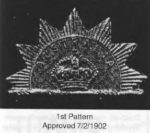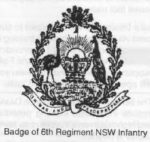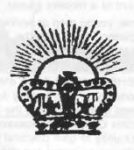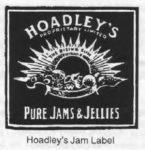- Author
- Grebert, Rick
- Subjects
- History - general
- Tags
-
- RAN Ships
- None noted.
- Publication
- March 1995 edition of the Naval Historical Review (all rights reserved)
I would like to congratulate Maury Wilson on his article about the history of the Army’s Rising Sun Badge in the September/October 1994 issue of NAVAL HISTORICAL REVIEW.
As Maury proudly points out, the father of the RAN, Admiral Creswell, was directly involved with the origin of the badge.
Unfortunately, the history of the badge is a little hazy. Many of the pre 1927 records were destroyed when the mountain of records was moved from Melbourne to Canberra when Parliament House was opened in 1927.

It is generally accepted that General Hutton approved the design of the first Rising Sun Badge. However, there is no evidence that his trophy of bayonets (Trophy of Arms) was the only submission to a Melbourne die sinker who produced the design that General Hutton approved for the first Rising Sun Badge.


Surviving records indicate that Captain (later Colonel) H.J. Cox-Taylor submitted a design to General Hutton for consideration. This design was based on the centre of the 6th Regiment NSW Infantry badge. The centre of this badge has a “rising sun” over a crown (see illustration). The question is – “Did General Hutton submit the Cox-Taylor and/or other design ideas to the die sinker with his Trophy of Arms design, or did he only submit his Trophy of Arms?”
General Hutton had requested and received design ideas from his Staff Officers. However, most were based on Australian flora and fauna, whereas General Hutton wanted a badge with a martial theme.
Several theories claim the authentic origin of the badge title RISING SUN:
1. The title that Major Gordon gave to his Trophy of Arms design was Australian Rising Sun. (Gordon gave the Trophy of Arms to General Hutton).
2. The badge represented the “new Nation rising from the southern seas, at the time of Federation in 1901”.

3. Before 1906, the only building near Victoria Barracks in Melbourne, was the Hoadleys jam factory. The label design on the jam tins was remarkably similar to the design of the second pattern Rising Sun badge (see illustration). The title on the label emblem was “The Rising Sun”. One exterior wall of the jam factory displayed a large image of the jam tin label. Large quantities of this jam were issued to the Australian troops in South Africa (“one tin for four men, twice a week”). The nickname HOADLEY’S HORSE was often given to the troops because of the similarity between their badge and the jam label.
Since the introduction of the first badge in 1902, it has always been referred to as the RISING SUN. However, it has never been “officially” called the Rising Sun Badge. It was originally called Badge Commonwealth and more recently Insignia General Service or General Service Badge.
The Rising Sun design has also been used as a theme for various Regimental, Corps, School Cadet and other badges.
There have been seven different Rising Sun badge designs since 1902 (General Service Badges). Four designs were illustrated in Maury Wilson’s article – the other three are illustrated in this article.




